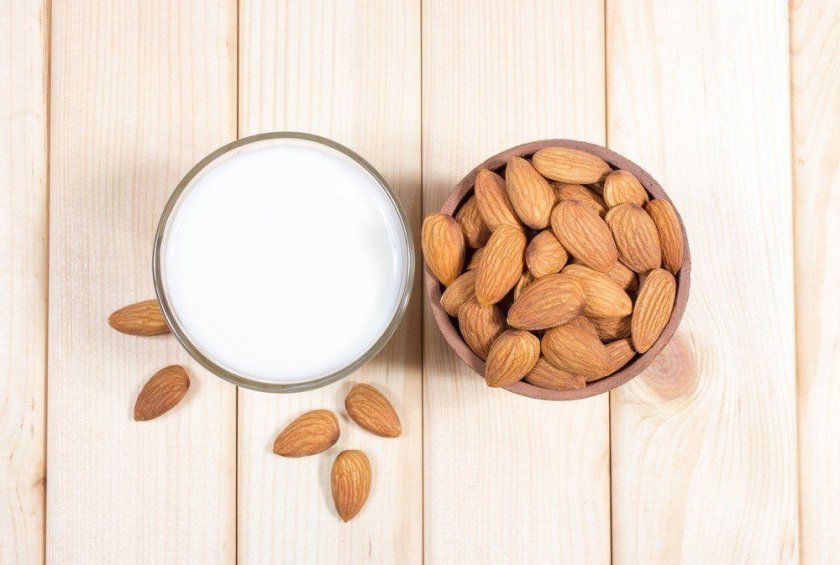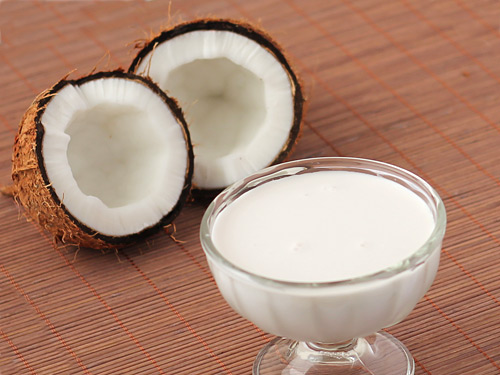There is little doubt that cow’s milk has been an integral part of American food and culture for generations. Therefore, it is surprising to see that it has fallen out of favor in some circles. In fact, as more people turn away from saturated fats, milk sales have dropped. Many people are on lactose-free diets and therefore turn to the numerous non-dairy milk items on the market. Sure, rice and soy milk have been around for years but with the advent of almond milk, the non-dairy milk industry is on an upswing. Almond milk is more trendy, novel and expensive than cow’s milk. This leads many to want a closer look at the differences between them.

Almond Milk vs. Cow Milk
1. Calorie Content
One reason people prefer almond milk is that it generally has les calories than in traditional cow’s milk, although it depends on the milk you purchase and the fat content. When you choose almond milk that is unsweetened you get 30 calories per cup.But 90 calories are found in one cup of skim cow’s milk. When you choose one-percent milk you have 110 calories, while two-percent provides 130 and whole milk gives 150 calories per cup. For those who like vanilla-flavored sweetened almond milk, there is about 90 calories in every cup.
2. Protein
There is quite a bit more protein in a cup of cow’s milk than there is almond milk. Protein is essential for satisfying hunger, helps you maintain your weight and helps with calorie burning. In fact, protein can promote lean muscle building even while you are losing weight. Regardless of how much fat your cow’s milk contains, you will get about 8 grams of protein per cup vs. the 1 gram found in a cup of almond milk.
If you choose a brand that has been fortified with protein, you are still only likely to get about 5 grams per cup. There are some high-protein brands of cow milk that will give you 13 grams per one cup serving.
3. Carbs
What about almond milk vs. cow milk in the regard of carbs content? You will see more carbs in cow’s milk over almond milk unless you select one that has sugar added. You get about 12 grams of carbs per glass of cow’s milk. This comes from lactose which is a form of natural sugar found in the milk.
Almond milk that isn’t sweetened provides about a gram of carbs while sweetened can give you as much as 16 grams or more per one cup.
4. Types of Fat
If you are looking for heart-healthy mono- and polyunsaturated fats, almond milk is the winner. Cow’s milk is mainly made of saturated fat. If you choose skim milk or low-fat milk, you can drastically reduce the amount of fat. There are studies that show too much saturated fat can increase heart disease risk.
Which Milk Is Healthier?
The fact is, both varieties pack many essential nutrients making them fairly healthy. They each have plenty of vitamins A, B and D as well as calcium. Cow’s milk will provide phosphorous and almond milk gives you vitamin E. You can take advantage of the high protein in cow’s milk. Those who are looking for lactose-free should consider almond milk. Almond milk vs. cow milk, which one should you choose? It totally depends on your needs and preference.
What About Other Milk Alternatives?
1. Soy Milk

One cup provides:
- About 80-100 calories
- Roughly 4 grams carbs unless sweetened
- About 4 grams fat
- 7 grams protein
All plant milks are naturally free of cholesterol and have low saturated fat. There is no lactose. You will find soy milk to be a good source of protein, calcium (in fortified varieties) and potassium. For more health benefits, look at fermented or probiotic soy milk, which can help with high blood pressure.
If you have thyroid disease or a few other conditions, soy milk can be a problem. There have been studies linking it to increased fertility issues such as low sperm counts. It is common to be allergic to it, so be mindful.
2. Rice Milk

Made from water and milled rice, it may contain some additives for preservatives and consistency, like other alternative milks. It is the most allergy friendly one of all the milks. This makes it an ideal choice for those who have an intolerance to nuts, soy or milk. Rice milk gives you the most carbohydrates.
Soy milk provides:
- 120 calories
- 22 grams carbs
- Less than a gram of protein
- About 1 gram fat
Rice milk can be fortified with vitamin D and calcium but isn’t a natural source. It is important to note that rice milk has shown higher levels of inorganic arsenic. The FDA recommends not solely using rice and rice products for pregnant women, infants and young children. They suggest providing variety.
3. Coconut Milk

Coconut cream and filtered water make up coconut milk. Coconut cream is typically coconut flesh grated up. It is not a nut, and those who are allergic to nuts should be able to enjoy it.
This milk may have a higher fat than other milk alternatives, and most is saturated. Each cup contains:
- About 50 calories.
- Around 2 grams carb
- 5 grams fat
- No protein
Though you can find fortified versions, this milk generally won’t have vitamins D, A or calcium.
This milk has increased in popularity recently, partly because of the type of fats it has. Some research suggests medium-chain triglycerides, such as those in coconut milk, may help with weight loss. It is important to note more research may be necessary because saturated fats in general are linked to increased heart disease risk.
